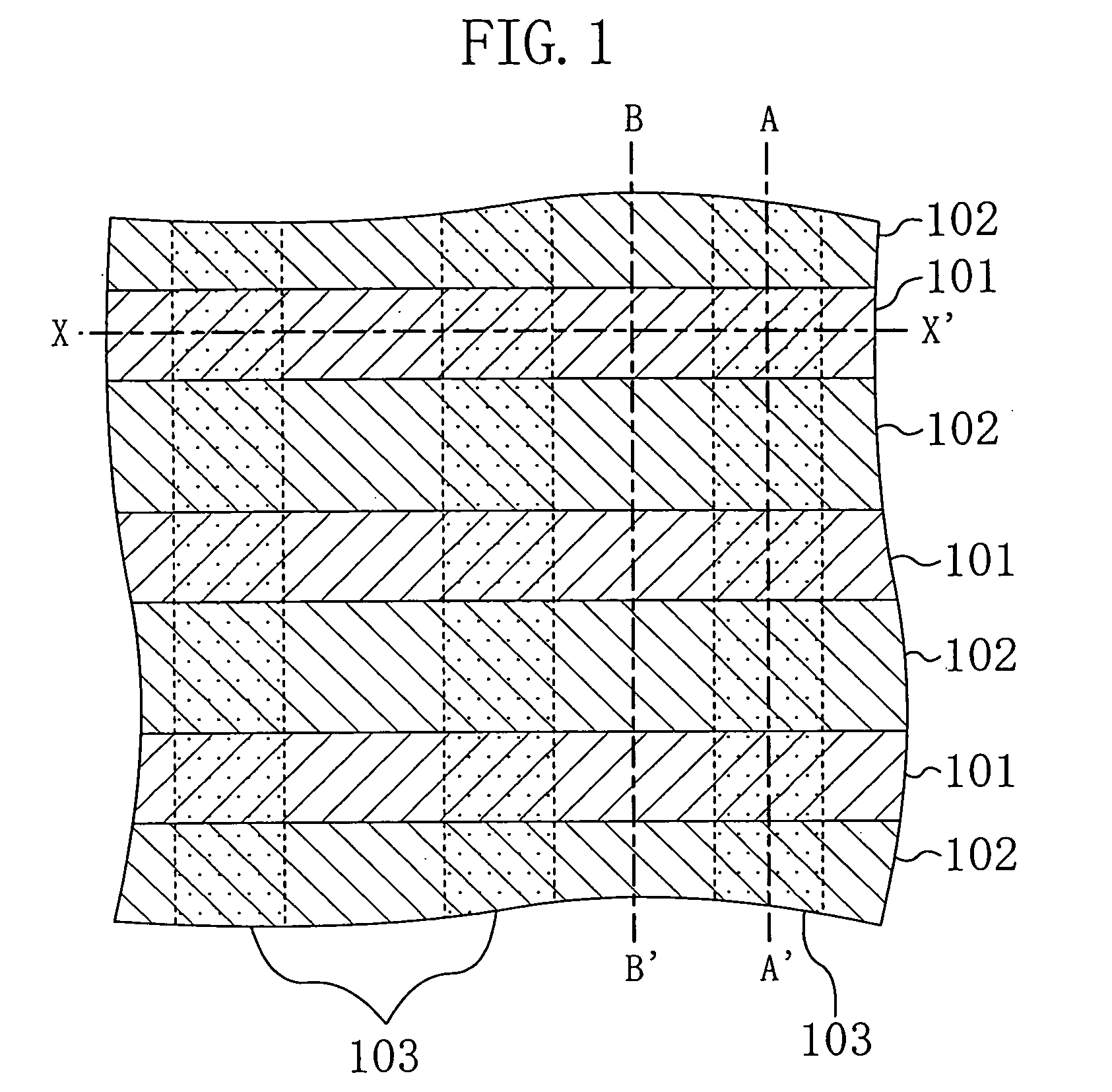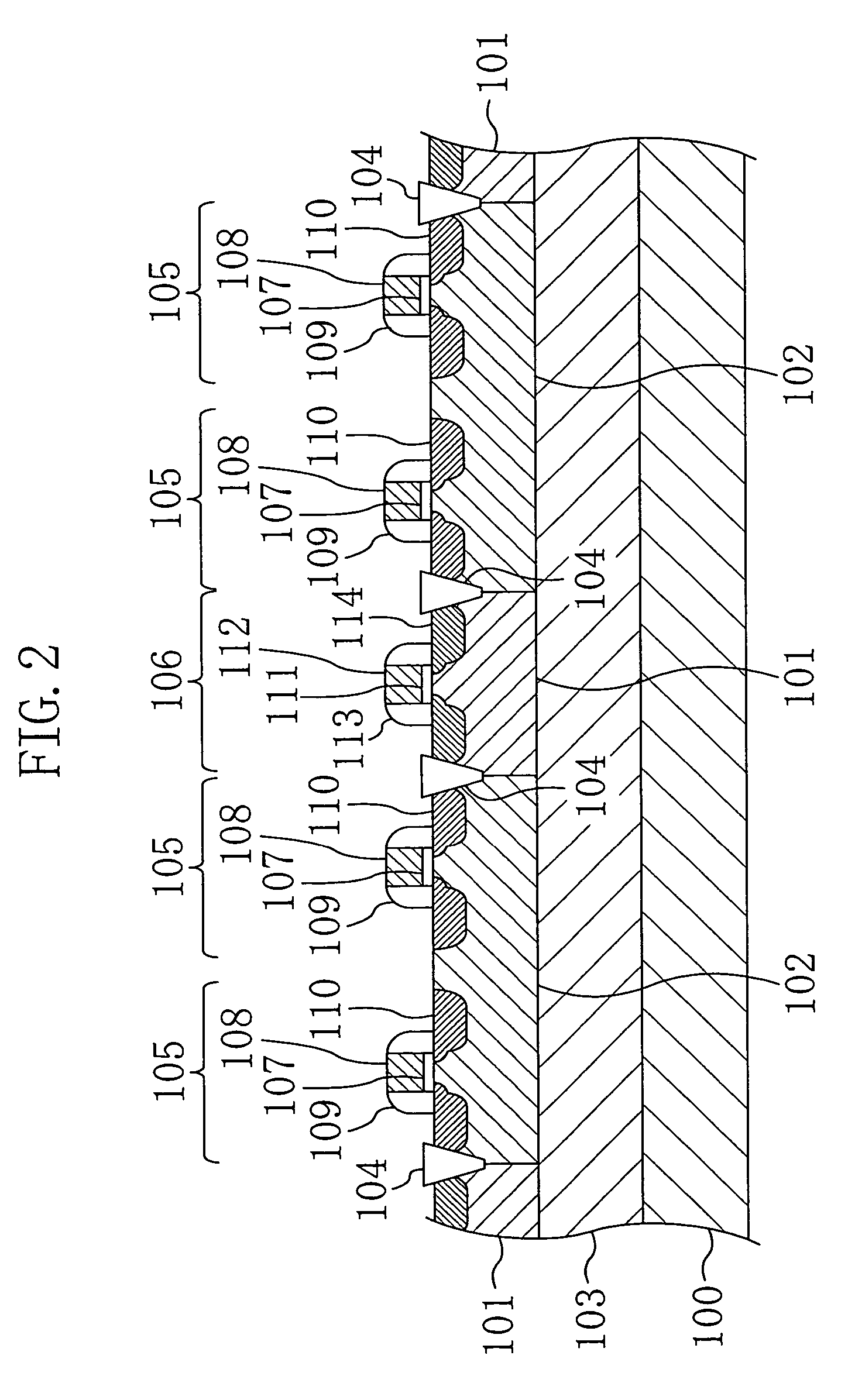Semiconductor device having triple-well structure
a technology of semiconductor devices and transistors, which is applied in the direction of semiconductor devices, transistors, electrical devices, etc., can solve the problems of increasing p-well resistance and the inability to reduce the area of memory cells, so as to increase the latch-up breakdown voltage, reduce the n-well resistance advantageously, and increase the p-well resistance
- Summary
- Abstract
- Description
- Claims
- Application Information
AI Technical Summary
Benefits of technology
Problems solved by technology
Method used
Image
Examples
embodiment 1
[0037]Referring to the drawings, a description will be given herein below to a semiconductor device according to a first embodiment of the present invention and to a fabrication method therefor by using the memory cell portion of an SRAM composed of MIS transistors.
[0038]FIG. 1 is a plan view showing an example of the layout of the memory cell portion of the SRAM according to the present invention. FIG. 2 is a cross-sectional view taken along the line A-A′ of FIG. 1. FIG. 3 is a cross-sectional view taken along the line B-B′ of FIG. 1. FIG. 4 is a cross-sectional view taken along the line X-X′ of FIG. 1. In FIG. 1, the depiction of transistor structures formed on individual well regions is omitted.
[0039]As shown in FIGS. 1 to 4, a plurality of N-well regions 101 and a plurality of P-well regions 102 are formed to be alternately arranged, each extending from a surface of a P-type semiconductor substrate 100 toward the inside thereof. Between the N-well regions 101 and the P-well regi...
embodiment 2
[0057]Referring to the drawings, a description will be given herein below to a semiconductor device and a fabrication method therefor according to a second embodiment of the present invention by using the memory cell portion of an SRAM composed of MIS transistors with reference to the drawings.
[0058]FIG. 12 is a plan view showing an example of the layout of the memory cell portion of the SRAM according to the present embodiment. FIG. 13 is a cross-sectional view taken along the line E-E′ of FIG. 12. FIG. 14 is a cross-sectional view taken along the line F-F′ of FIG. 12. FIG. 15 is a cross-sectional view taken along the line Y-Y′ of FIG. 12.
[0059]In FIG. 12, the depiction of transistor structures formed on the individual well regions is omitted.
[0060]As shown in FIGS. 12 to 15, a plurality of N-well regions 201 and a plurality of P-well regions 202 are formed to be alternately arranged, each extending from a surface of a P-type semiconductor substrate 200 toward the inside thereof. B...
PUM
 Login to View More
Login to View More Abstract
Description
Claims
Application Information
 Login to View More
Login to View More - R&D
- Intellectual Property
- Life Sciences
- Materials
- Tech Scout
- Unparalleled Data Quality
- Higher Quality Content
- 60% Fewer Hallucinations
Browse by: Latest US Patents, China's latest patents, Technical Efficacy Thesaurus, Application Domain, Technology Topic, Popular Technical Reports.
© 2025 PatSnap. All rights reserved.Legal|Privacy policy|Modern Slavery Act Transparency Statement|Sitemap|About US| Contact US: help@patsnap.com



